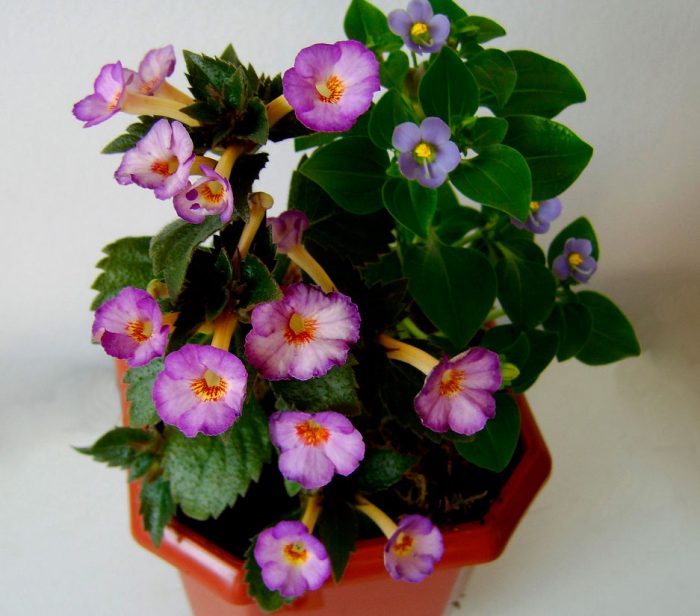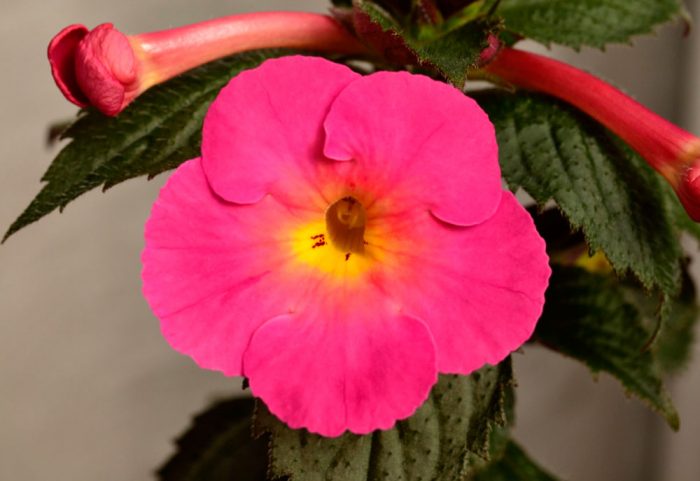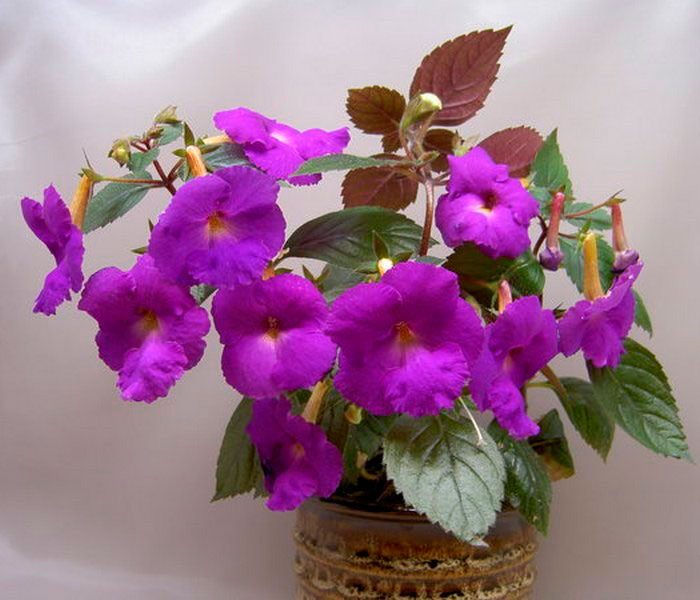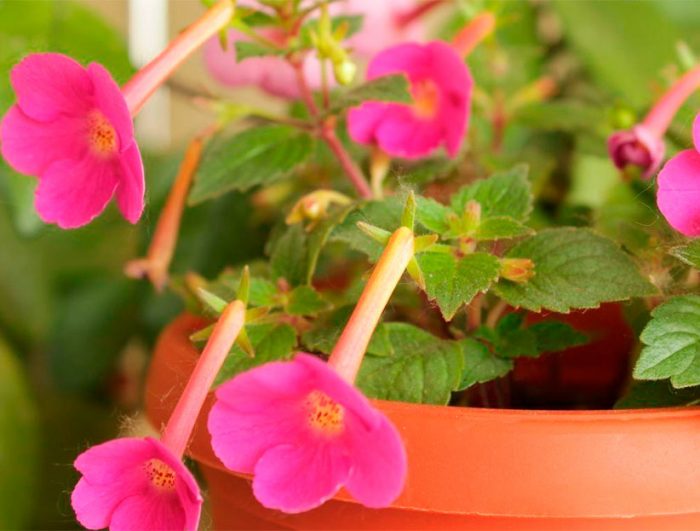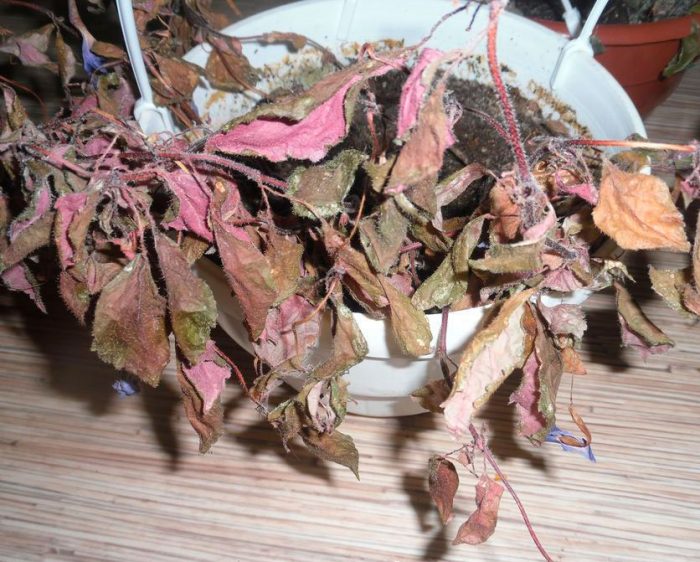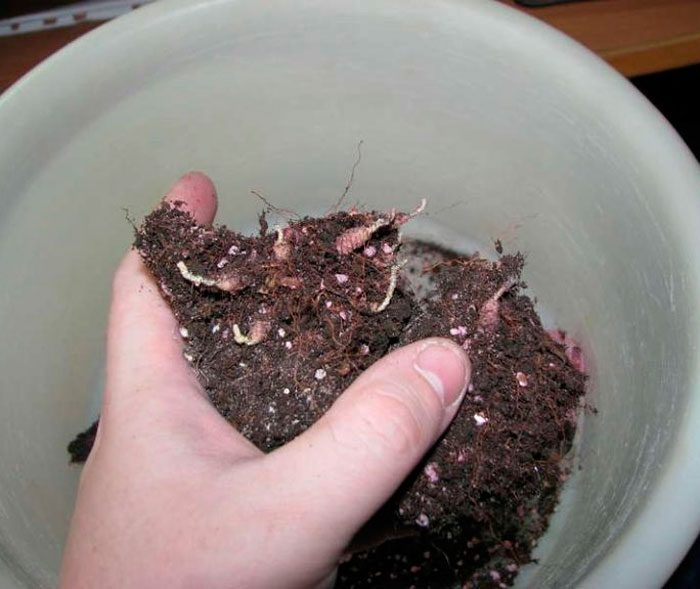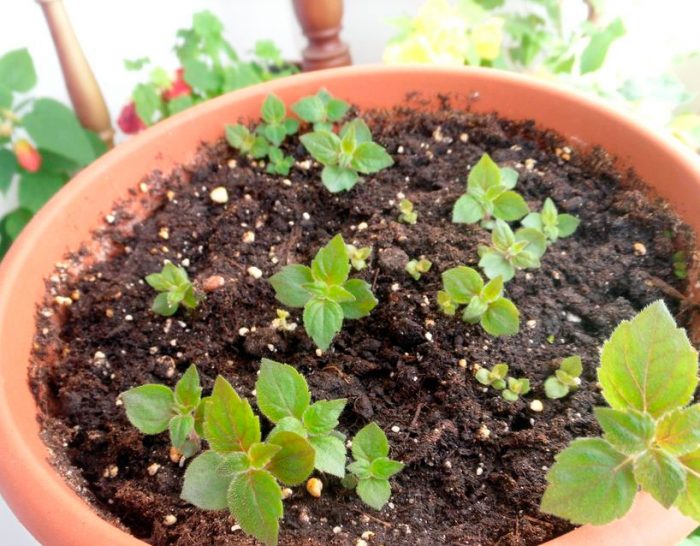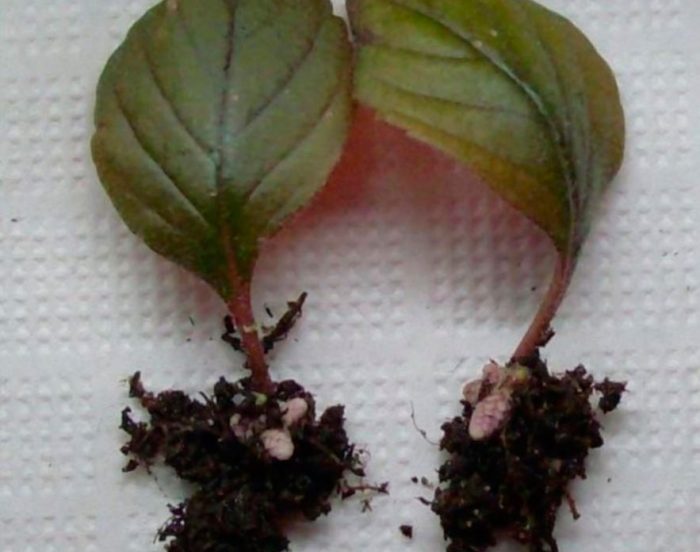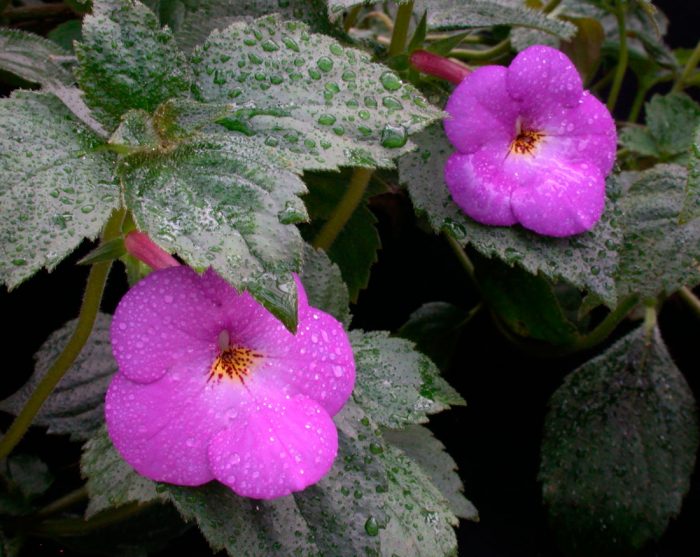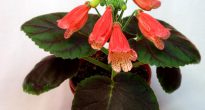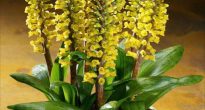The plant Achimenes is part of the Gesneriaceae family and is very popular with flower growers. In nature, there are about 50 species belonging to this genus, all of them are represented by perennial herbaceous plants. This plant has been cultivated since the 18th century, and in nature it can be found in the tropical regions of Central and South America. Among the people, Ahimenes is also called the "magic flower".
Content
Features of achimenes
When growing achimenes at home, you need to remember that it has a dormant period. Preparation for this period at the flower begins in mid-October. During the winter months, it should be kept in a dark and cool (about 16 degrees) place, and the bush is watered very sparsely at this time.
All types of achimenes have pubescence. The stem of the bush can be branched, and the foliage is with a jagged edge and pubescence (depending on the species). After opening, the flowers fade and die very quickly, but new buds appear in their place just as rapidly. The color of the flowers is varied: pink, yellow, red, purple and other colors. They are decorated with various patterns, namely: spots, dots and stripes.
Brief description of cultivation
- Bloom... Twice during the season from May to October.
- Illumination... Growing dark-leaved forms, they are provided with a large amount of light, while in the morning and evening they need a little direct sunlight. Variegated forms are grown in light shade or in a place with diffused light.
- Temperature regime... During the growing season - from 20 to 23 degrees, and from the second half of autumn to mid-spring - from 15 to 17 degrees.
- Watering... Moisten the soil using the bottom irrigation method (through the pan). During the growing season, water is abundantly watered, and from the last days of September, it will be necessary to reduce the frequency of watering to once every 30 days.
- Air humidity... It should be high, but it is impossible to moisten the bush from the sprayer. Instead, the air around it is humidified, or wet pebbles are poured into the pan, on which a flower pot is placed.
- Fertilizer... Ahimenez begins to feed after the first young shoots appear, and ends when it fades. There is no need to feed him at other times.Fertilizer is applied to the soil 1 time in 15 days.
- Dormant period... It starts in the second half of October and ends in March.
- Transfer... It is held in the first days of February.
- Soil mixture... It should consist of sod and leafy soil, and also sand (2: 4: 1).
- Reproduction... Rhizome division, cuttings and seed method.
- Harmful insects... Aphids, spider mites and thrips.
- Diseases... The plant rots due to too much watering.
Achimenes home care
Illumination
Ahimenes is a light-loving plant. However, it should be borne in mind that different types of it require different lighting intensities. When growing dark-leaved forms, it is necessary to provide them with a large amount of bright light, while they will not be harmed by direct sunlight from the morning or evening sun. Variegated forms grow well in bright, diffused lighting and in little shade. Do not expose their foliage to direct sunlight, as this can cause burns on them.
Temperature regime
During the growing season, achimenes grows well and develops at temperatures from 22 to 23 degrees. From mid-October, the temperature in the room where the flower is located begins to gradually decrease, it is at this time that the root system of the plant is gaining strength, preparing for a long period of rest.
Watering
Ahimenes needs abundant watering throughout the growing season. To do this, use soft, well-settled water. However, make sure that no liquid stagnates in the root system. Remember that during watering, drops of water should not fall on the surface of the leaf plates, as the plant reacts extremely negatively to this. Therefore, it is recommended to water the flower using a syringe or through a pallet (bottom watering). The temperature of the water used for irrigation should be slightly above room temperature.
Air humidity
The plant needs high air humidity, however, you cannot spray the foliage. To increase the humidity, either spray the air near the flower from a spray gun, or pour wet expanded clay or pebbles into the pallet and put a flower pot on it. Make sure the bottom of the pot does not come into contact with the liquid. If drops of moisture fall on the foliage, then brown specks form on it.
Fertilizer
They begin feeding only after 30 days have passed since the appearance of young shoots, for this they use a mineral complex fertilizer. It is introduced into the substrate once every 15 days. Finish feeding the achimenes immediately after it fades.
Pruning
As soon as the part of the bush that is above the ground is completely dry, it is cut off. If you prune earlier, then the root system will not have time to draw out all the nutrients that will be useful to it during the dormant period from the foliage.
Dormant period
From the middle of autumn, the foliage of the plant begins to dry out. After its aerial part is cut off, the flower pot is removed to a place where it is always dark and cool (about 15 degrees). Already in the last days of September, watering begins to gradually reduce, and when the bush is cut off, the soil is moistened once every 30 days and a small amount of well-settled water is used for this. If the plant is watered too abundantly at this time, it can wake up and start growing too early. In the event that the flower nevertheless wakes up ahead of time, then it is transferred to a well-lit place, and if necessary, it is provided with additional lighting, for example, with fluorescent lamps. Only with good lighting will achimenes grow and develop within normal limits.
Planting and transplanting
Achimenes rhizomes stored in pots in winter, begin to grow when the temperature rises to 18 degrees, as well as due to bright lighting and an increase in the frequency and abundance of watering. If the rhizomes were stored in the sand in winter, then after planting in a pot, they also begin to grow actively.
A transplant or planting of such a plant is carried out in the first days of February. Since the rhizome of Achimenes is rather short, a low flower pot is used for planting. If during the transplant it is found that the rhizome is very large, then it can be divided into parts, while the delenki are planted in separate pots. The rhizome is cut with a very sharp tool so that there is a growth point on each division. After the cut point dries up, it is sprinkled with coal powder and planted in a fertile substrate. At the bottom of the container, it is necessary to make a thick layer of drainage, which should occupy half the height of the pot, for this you can use expanded clay or pieces of brick. Then the drainage is covered with a layer of soil mixture, which can have several composition options:
- sod and leafy soil, as well as sand (2: 4: 1);
- sand, leaf and peat soil (1.5: 4: 2);
- humus, sand, deciduous and soddy soil (1: 1: 2: 3).
Whichever option you choose, a small amount of fine charcoal should be added to the finished mixture. Place the rhizome in a prepared pot and press a little into the soil mixture. After that, cover it on top with the same potting mix.
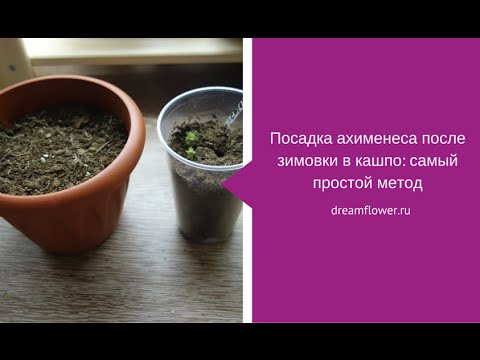

Watch this video on YouTube
Reproduction methods
How to propagate achimenes by dividing the rhizome is described in more detail above. Cuttings and the seed method are also used for reproduction.
Growing from seeds
Sowing seeds is carried out in the last days of winter or in early spring. To do this, use a container filled with coarse sand. The crops are covered with foil (glass) from above and the sand is moistened through the pan. They are kept in a warm place (from 24 to 26 degrees) and do not forget to air them systematically. The first seedlings should appear in 2-3 weeks. As they grow up, they are dived twice or thrice into pots, which should be slightly larger than the old ones. After the bushes grow up and get stronger, they are transplanted into a permanent container and begin to look after in the same way as for an adult achimenes. Seed material can be purchased at a flower shop or collected by hand if you already have such a plant at home. To do this, wait until 8 weeks have passed after the end of flowering, and pick the formed and softened fruits, in which the seeds are located.
Cuttings
Achimenes cuttings are rarely propagated. Cut off the stem and take the lower or middle part for the cutting. It is planted for rooting in the sand and covered with a cut bottle or glass jar. Water it through the pallet and ventilate it systematically. In order for the roots to appear faster, you can use a special tool that stimulates root formation. After 15 days, the cuttings will take root, and after another half a month they are transplanted into a permanent pot.
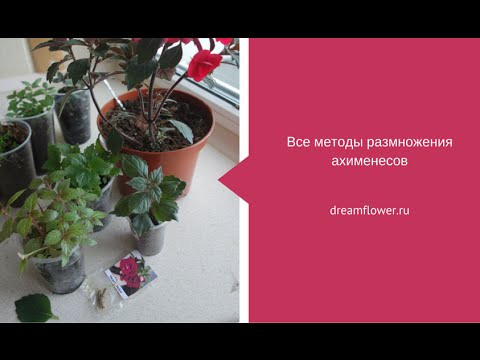

Watch this video on YouTube
Diseases and pests
When growing achimenes, the following problems may arise:
- The buds turn brown... The room is very hot, lower the temperature to 24 degrees.
- The bush is affected by gray mold... This can happen due to stagnant water in the substrate. The soil mixture should dry well between waterings.
- Brown spots on foliage... The bush is watered with cold water.
- Harmful insects... Pests such as spider mites, thrips or aphids can settle on the flower.
Types of achimenes
Achimenes longiflora (Achimenes longiflora)
It is a perennial herb with a scaly rhizome and can reach a height of about 30 centimeters.There is pubescence on the surface of green drooping shoots. The species can be grown as an ampelous plant. Opposite or whorled oblong leaf plates have a serrated edge and pubescence. Single large purple flowers grow from the leaf sinuses. There are many shapes and varieties.
Achimenes grandiflora (Achimenes grandiflora)
A native of Mexico, it can reach a height of more than half a meter. Its leaf plates are larger than that of long-flowered achimenes, their width is about 6 centimeters, and their length is up to 10 centimeters. Reddish purple flowers grow from the leaf sinuses. As a rule, two flowers grow from one sinus.


Watch this video on YouTube

